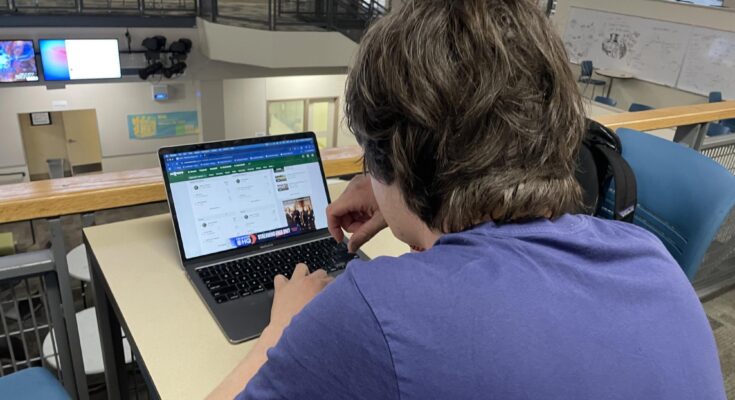In today’s competitive world of high school sports, talent and hard work are no longer the only ingredients for success. Technology — once reserved for the pros — is now a powerful tool transforming how student-athletes train, improve, and compete.
Varsity basketball coach Brandon Byer is at the forefront of this shift as he integrates a suite of digital tools into his coaching regimen.
“There are so many benefits to using technology in sports today, from heart rate monitors to shot tracking platforms to advanced data collection apps,” Byer said. “The key is being selective about which tools give our athletes the greatest advantage.”
Byer said his approach relies on software programs like Luceo, Angles, and Hudl to keep players sharp on and off the court.
Story continues below advertisement
“Luceo helps me design digital plays and dynamic strategies that my team can access anytime on their mobile phones, iPads or laptops,” Byer said. “With Angles, I can efficiently organize and break down film of both our team’s and our opponents’ game performances. Finally, Hudl is an onsite digital recording system that captures live games and uploads them to a user-friendly interface, so our athletes can watch and learn on their own time.”
The intersection of technology and sports produces positive results. Sophomore point guard Rocco Smith said these tools have enhanced his perspectives of the game.
“Coach Byer’s use of technology has really taken my understanding of basketball to an entirely new level,” Smith said. “It’s not just about working harder — it’s about working smarter. Watching video clips on Hudl and studying plays on Luceo has enhanced my game IQ so that I could make crucial gametime adjustments.”
While many coaches utilize technology in their sports, they are not the only drivers of innovation. Senior Jonathan Nguyen has embraced technology by building his own solution from scratch.
Blending his love of baseball with his curiosity about artificial intelligence, Nguyen developed a smartphone-based biomechanics simulation that leverages computer vision to analyze batting and pitching mechanics.
“As I learned more about coding and AI, I started to conceptualize a tool that could give players real-time feedback on their form,” Nguyen said.
After months of coding and testing along with lots of trial and error, he rolled out the project with two teammates. They quickly identified and analyzed their swing imperfections and inconsistencies. After refining their techniques, the results were impressive. Both players saw significant spikes in their batting averages. Better yet, each player has committed to NCAA Division I programs at Brown and Holy Cross.
“They’re incredibly talented athletes, no doubt,” Nguyen said. “But I’d like to think my simulation gave them a small edge.”
Nguyen’s story is proof that student innovation can have a real impact — even at the high school level. His technology has inspired other athletes at Paly to think outside of the box when it comes to upping their skills.
With all this technology at student-athletes’ fingertips, Byer stresses the importance of balance.
“If we overload our players with data, they risk becoming robotic,” Byer said. “But when used in moderation and implemented in manageable pieces, tech can be a game changer.”
Ultimately, Nguyen said he believes technology can provide significant assistance in innovation and discovery.
“I’ve witnessed the power of technology in making almost anything possible,” Nguyen said. “If you can imagine it, you can make it happen.”



